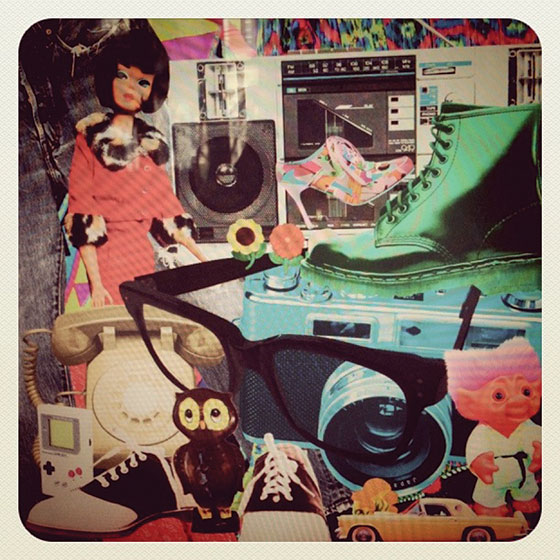
The problem with talking to adults about music used to be all the reactionary lectures: Music was better back then, they’d say, and the best thing young people could do was study the history. London-born critic Simon Reynolds is a family man in his forties, and a read through his new book, Retromania: Pop Culture’s Addiction to Its Own Past, might leave you with the suspicion that things actually were better “back then”—but only because we’ve taken those lectures too literally. “There has never been a society in human history,” he writes, “so obsessed with the cultural artifacts of its own immediate past.”
He’s hardly the first to worry that pop culture, instead of churning into the future, now just swims around an ocean of ideas from yesterday. It’s been decades since design, fashion, and music started treating history as a closet to be rummaged—savvy artists piecing together styles and references for equally savvy audiences to decode. (Anyone who’s enjoyed a Tarantino film already knows this drill.) And revival culture, as Reynolds shows, stretches back to postwar jazz, if not beyond. Still, the rise of the Internet and file-sharing has helped make the past decade feel particularly flat and static—especially to a forward-looking critic like Reynolds, who’s still best known for chronicling the U.K.’s relentlessly futurist rave scene. Even the “cutting edge” artists he’s most attracted to now, like the L.A. eccentric Ariel Pink, are steeped in music’s past; half of them sound like they’re hallucinating the records they might have owned in some alternate-universe version of the eighties.
Moved as he is by those acts, Reynolds can’t exactly turn curmudgeon, and Retromania is no polemic. Instead, it’s a terrifically agile and edifying spin through the logic of modern pop culture: Punk-rock reunion tours, reissue labels, and record collectors rub up against critical theory, sixties fashion, and Japanese music culture, with idea-packed detours into the modern attention span, the “franticity” of Internet use, and the rise of “curating” pop culture as a full-fledged career option. The stuff that really fascinates isn’t those artists collaging bits and pieces of older styles; it’s the huge pockets of the music world that stake out a piece of lost ground and simply camp out there, like preservation societies or Civil War reenactors. Reynolds understands the allure of that, too, and his sections on the people involved—the mp3 bloggers who post old rarities, the bands who track down vintage gear, or the scenes, like Northern Soul, that spend decades obsessing over styles that lasted only a few years in the first place—are fundamentally an insider’s take. That, in fact, seems like one of the things that nag him most: How ironic is it that music-obsessed aesthetes, who usually like to see themselves as bohemian and avant-garde, are now the most committed to surfing through and archiving the past?
The crux of it, one suspects, is something author William Gibson calls “radical atemporality.” Reynolds explains this by analogy to that “suggestions” sidebar on YouTube where you can wander seamlessly from sixties blues-rock to eighties house music to nineties rap, all side by side in time and space. We’ve become so used to this type of access, he writes, “that it is a struggle to recall … that relatively recently, one lived most of the time in a cultural present tense, with the past confined to specific zones.” And there’s the rub: No matter how worrisome our lack of a Now might feel, it’s damnably difficult to pinpoint what anyone’s doing wrong. When the entire past is laid out before you, with a billion styles to love—the collected genius of movie musicals, Edwardian fashion, acid folk—what are the chances that something from today will captivate you most? And why should you feel bad if it doesn’t?
Reynolds gives us countless ways to think about this, and a few reasons to worry. Chief among them: the way we’ve started to fixate on acts of consumption—art-making as a form of aesthetic shopping—instead of the act of expression. “Some of the great artists of our time,” he writes, “are making music whose primary emotion is towards other music, earlier music,” instead of an experience of the broader world. And some of the people listening to it are so steeped in the history of aesthetics that “earlier music” is their experience of the broader world. This is the problem, perhaps, with “virtuoso consumers” and cultural polymaths: The more we know, the less susceptible we are to the kind of wide-eyed, blinkered innocence that’s behind every good vision of the Future, from Walt Disney’s Tomorrowland to the raves Reynolds danced at in the nineties (both of which designers, directors, and musicians still use to denote futurism). And if we can each hop online and choose our own present, what are the chances any critical mass of people will all want to surge into the same future?
Retromania: Pop Culture’s Addiction to Its Own Past
By Simon Reynolds.
Faber & Faber. $18.